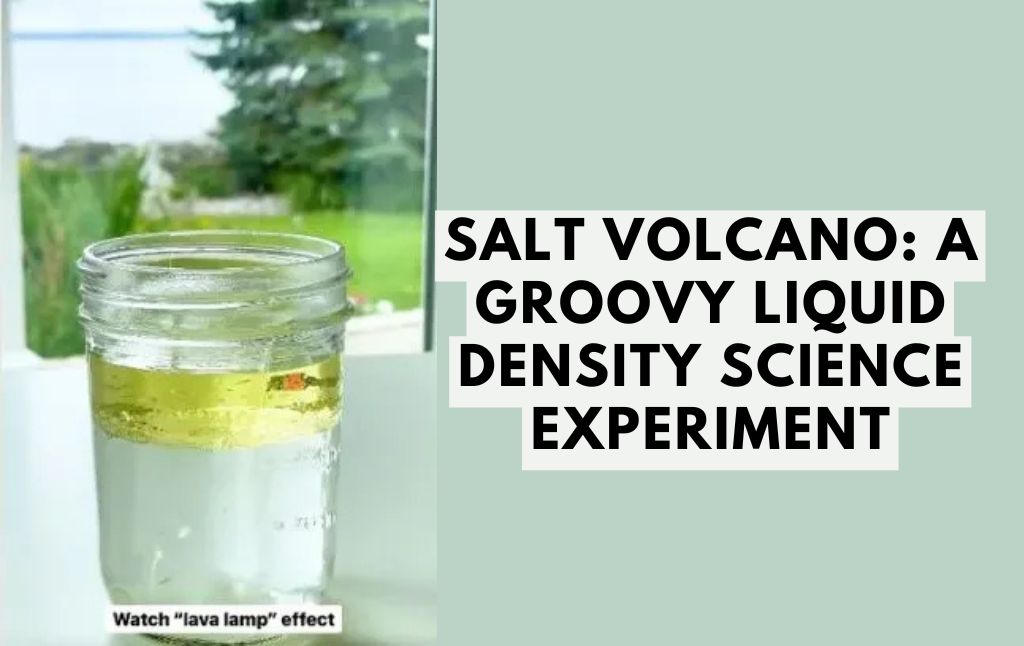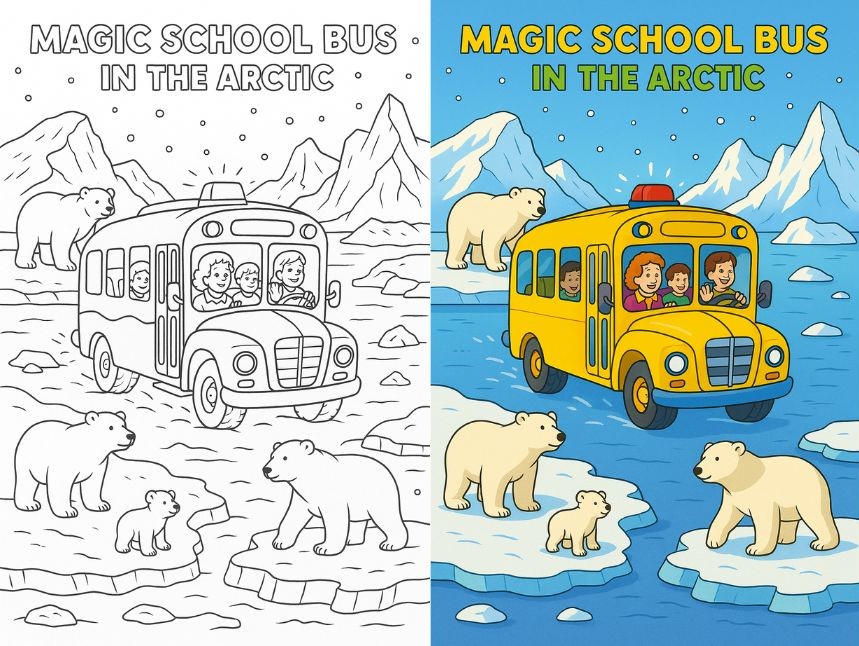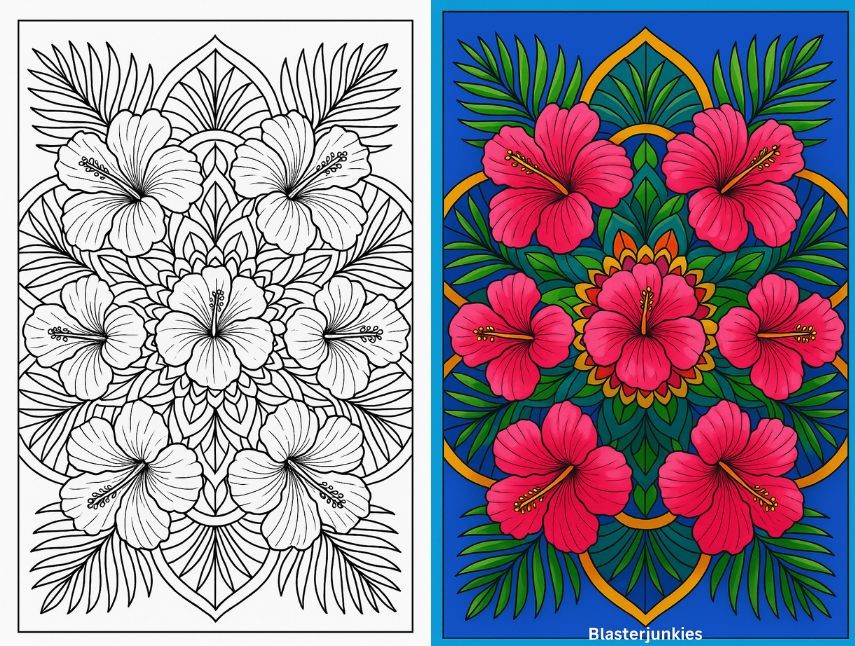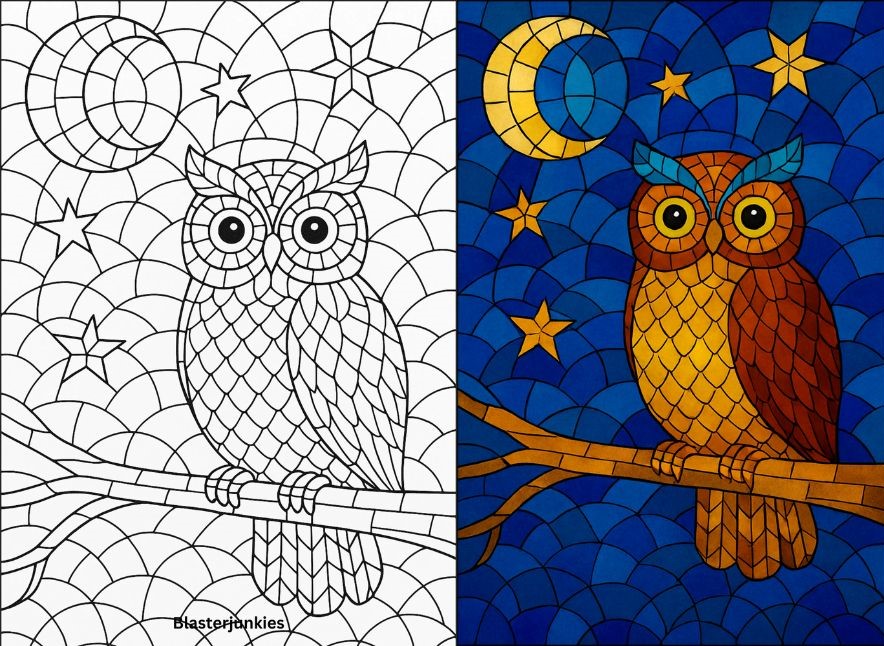Looking for a dazzling, hands-on science experiment that will amaze your kids? The Salt Volcano is a super fun, colorful, and easy activity that teaches children about liquid density while creating a mesmerizing lava lamp effect.
This experiment is not only visually stunning but also educational, making it perfect for home learning or a classroom STEAM activity.
Why Kids Will Love the Salt Volcano Experiment
- It’s colorful and full of movement!
- The bubbling lava effect looks like a real volcano!
- It’s a great way to learn about density and immiscible liquids.
- It requires only a few household ingredients.
What You Need
- A bottle or jar (clear glass works best)
- 1 cup of room temperature water
- ¼ cup of vegetable oil
- Salt (rock salt works best, but table salt will also work)
- Food coloring (optional, but makes it extra fun!)
How to Make a Salt Volcano
Step 1: Pour in the Water
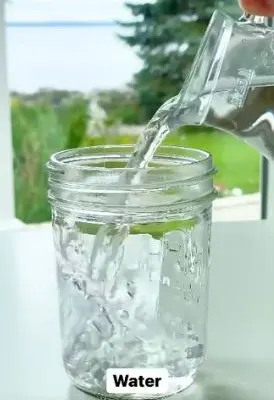
Start by filling your bottle or jar with one cup of water.
Step 2: Add Food Coloring (Optional)
If you want your salt volcano to be more vibrant, add a few drops of food coloring to the water.
Step 3: Pour in the Oil
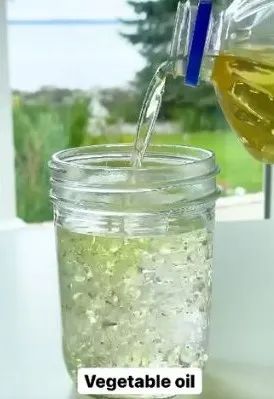
Slowly pour ¼ cup of vegetable oil on top of the water. You’ll notice that the oil floats on the water—this is an important part of the experiment!
Step 4: Sprinkle in the Salt
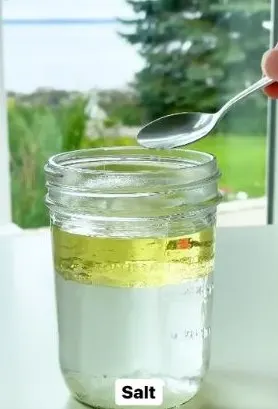
Now for the fun part! Sprinkle a spoonful of salt into the jar and watch what happens.
Step 5: Observe the Magic!

As the salt sinks, it pulls some of the oil down with it. But as the salt dissolves, the trapped oil rises back up, creating a bubbling, lava lamp effect. Keep adding more salt to keep the experiment going!
The Science Behind the Salt Volcano
This experiment is all about liquid density and immiscible liquids (liquids that don’t mix).
Oil and water don’t mix because they have different densities. Oil is less dense than water, so it floats on top.
Salt is denser than both water and oil, so it sinks to the bottom, dragging some oil with it.
As the salt dissolves in water, the oil it carried down gets released and rises back to the top.
This creates the lava lamp effect, making it look like a tiny volcano erupting inside the jar! 🌋
Fun Variations to Try
Try different salts – Experiment with table salt, rock salt, or coarse sea salt. Larger grains sink slower, making the effect last longer!
Change the amount of water – Does more or less water change the lava effect?
Add food coloring in different ways – Add it before or after the oil and see what happens!
Try different oils – Does vegetable oil work better than olive oil? What about baby oil?
Final Thoughts
The Salt Volcano Experiment is a simple but groovy science activity that kids will love. It’s a fantastic way to introduce them to density, immiscible liquids, and chemical reactions in a fun and engaging way.
Whether you’re looking for a quick at-home science project or a creative STEAM classroom activity, this experiment is sure to be a hit!
Give it a try and let the colorful eruptions begin! 🎆🌋
Would you like a printable worksheet to go along with this experiment? Let me know! 😊
Kids Activities
Looking for more fun kids activities and other ideas to keep kids engaged, learning, and having fun? Check out these:
Fireworks in a Jar: A Fun and Magical Science Experiment for Kids
Ice Cube Painting: A Fun and Cool Summer Art Activity for Kids
Rainbow in a Jar Density Experiment – A Fun and Colorful Science Activity
Hot and Cold Balloon Science Experiment for Kids
Soda and Mentos Geyser Activity: A Fun and Explosive Science Experiment!
How to Make a Pellet Drum | Chinese Rattle Drum
Lava Lamp Experiment with Oil and Water: A Fun DIY Science Project

